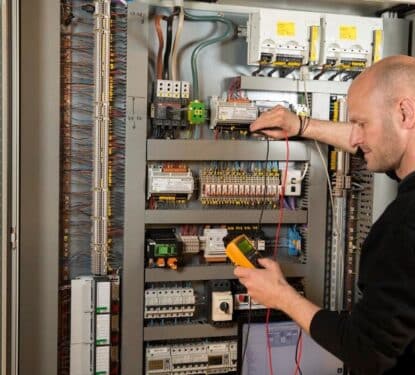In 2011 the US Department of Energy (DOE) set a target as part of their SunShot Initiative that the cost of solar power should reach a very competitive $1 per watt, or 6 cents per kilowatt hour, by 2020. Last week they announced they had reached this target a full three years ahead of schedule and expect this cost to drop even further. This is a significant benchmark for those in working with buildings and power grids, who should by now know that solar is the smartest choice for the evolution of their energy generation needs.
The 6 cents per kilowatt hour rate is not simply the lowest cost we have seen for solar power generation in the US, it is a rate achieved in Kansas City, the department’s mid-range yardstick. Lower cost has already been achieved in states with abundant sunlight such as Arizona and New Mexico, and while rates in northern states like New York remain higher, they are also coming down. The figures published by the DOE also don’t include the government’s Investment Tax Credit (ITC), which brings down the cost of solar panels even further.
The announcement was made in conjunction with the annual Solar Power International conference, and given the resounding success the department is already looking forward. An expanded 2030 vision for the Solar Energy Technologies Office has been established that will continue research to drive down costs, new funding programs will focus on a broader scope of Administration priorities. The 2030 vision includes early-stage research to address solar energy’s critical challenges of grid reliability, resilience, and energy storage.
“With the impressive decline in solar prices, it is time to address additional emerging challenges,” said Daniel Simmons, the DOE’s Acting Assistant Secretary for Energy Efficiency and Renewable Energy. “As we look to the future, DOE will focus new solar R&D on the Secretary’s priorities, which include strengthening the reliability and resilience of the electric grid while integrating solar energy.”
Acting Assistant Secretary Simmons announced up to $82 million in early-stage funding research in two key areas. Up to $62 million of that will support advances in Concentrating Solar Power (CSP) technologies to enable on-demand solar energy.
CSP uses mirrors to reflect and concentrate sunlight onto a focused point where it is collected and converted into heat. This thermal energy can be stored and used to produce electricity when the sun is not shining or integrated into other applications, such as producing fresh water or supplying process heat.
A further $20 million is dedicated to early-stage projects to advance power electronics technologies. Such innovations are fundamental to solar PV as the critical link between PV arrays and the electric grid.
Advances in power electronics will help grid operators rapidly detect and respond to problems in order to protect the Smart Grid against physical and cyber vulnerabilities, as well as enable consumers in homes and buildings to manage electricity use more effectively.

According to a 2017 report from the National Renewable Energy Laboratory (NREL), low solar module prices have been the primary driver of cost reductions for solar energy. The more stubborn “soft” costs like labor, permitting, interconnection, customer acquisition, financing, and grid integration, remain challenges. Soft costs like these scale directly with the size of solar installations - as system sizes increase, the per-watt cost to build them decreases - thereby encouraging the development of large, utility-scale solar power plants.
So what does this all mean for the cost and potential greater adoption of solar power for buildings? Just like the size of homes, average residential solar system sizes have not changed significantly over the past 6 years, the NREL report concludes. Conversely, commercial system sizes have changed much more frequently, “likely reflecting the wide scope for commercial customers, which include schools, office buildings, malls, retail stores, and government projects,” according to the report.
Solar systems for commercial buildings have gained popularity periodically, by sector or location, as targeting and incentives took hold. The larger the commercial building, the better the business case for installation of solar panels. This relationship is further amplified by the improved integration between smart grids and smart buildings, as investigated in our comprehensive report Smart Buildings Meet the Smart Grid: Markets, Trends & Enabling Technologies.
As the cost of solar power began to fall, larger commercial buildings started to embrace rooftop solar to supplement their power provision. By 2017 much of this low hanging fruit had already been picked, and although the decline in price has been gradual, significant benchmarks like these serve as a timely reminder to the wider branches of the commercial building market, that solar power will continue to be the smart choice for energy generation in the future.
[contact-form-7 id="3204" title="memoori-newsletter"]



